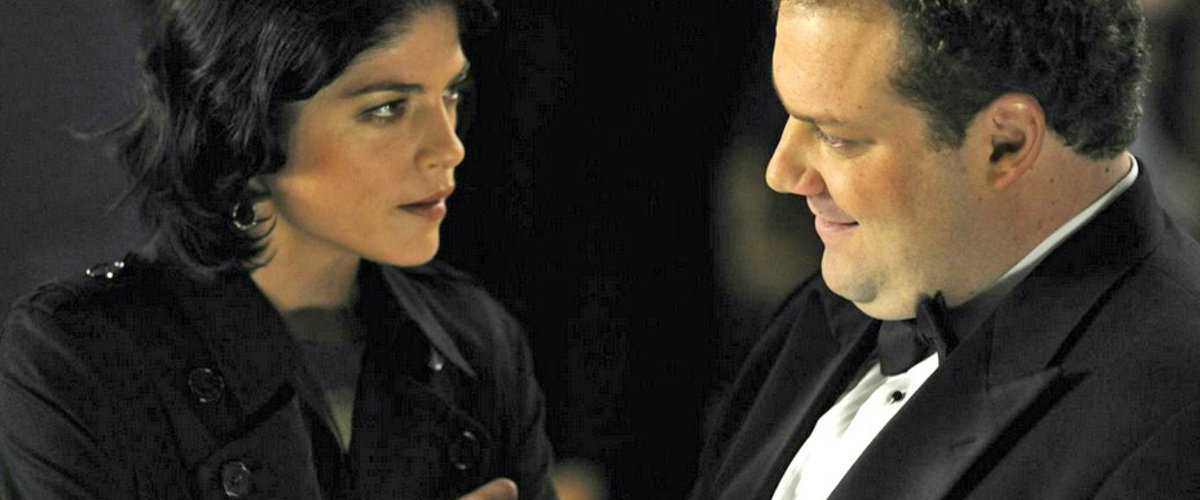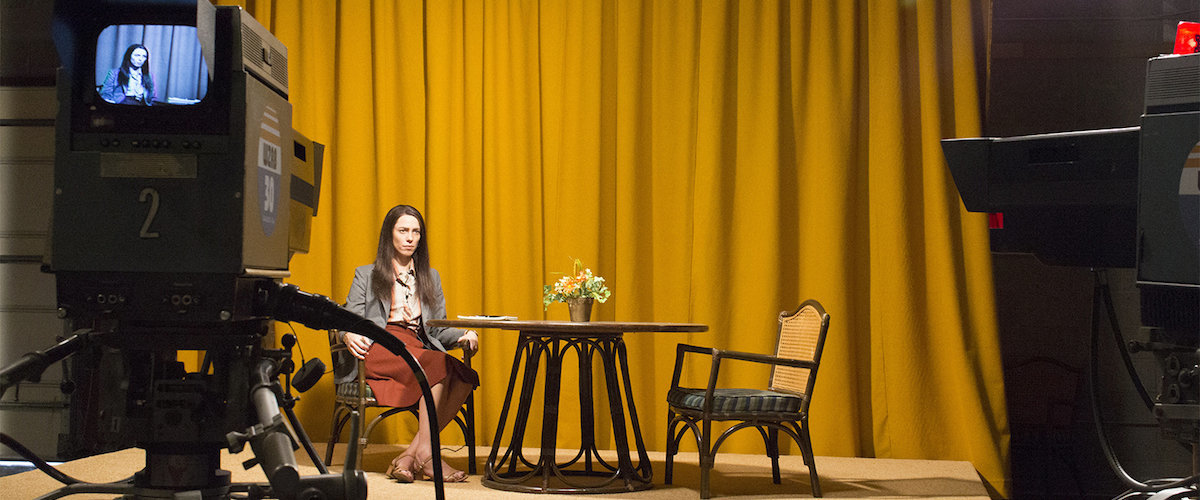
GLOW was one of those oddball television phenoms out of the late 1980s - a visual snack that really hit the spot, a la Morton Downey Jr., Married with Children, Mike Tyson on HBO, Night Flight on the USA network, Pee Wee's Playhouse, videos on MTV - and I'd be lying if I said I'd never watched it. I remember it was on Saturday nights on my local FOX affiliate, in between late infomercials for Santo Gold, some Mexican wrestler who sold costume jewelry and was eventually busted for mail fraud. GLOW - The Gorgeous Ladies of Wrestling, was a smart move by a bunch of hustler types trying to cash in on the WWF's blossoming popularity. In a way, GLOW was to the WWF what The Monkees were to The Beatles. A new show on Netflix titled GLOW is a highly fictional account of the program, with Marc Maron as the seedy director-producer, and a collection of young actresses portraying variations of the old GLOW girls. Good intentions aside, it has no snap. The old show was fun and goofy, vaudeville in spandex; the new thing takes itself way too seriously.
In the first episode we meet Ruth Wilder (Alison Brie), an unemployed young actress who finds her way to an audition for a wrestling program. Before you know it, this drama class wimp is trying to make it in pro wrestling. The show's creators - Liz Flahive and Carly Mensch - have a lengthy history of revered cable dramas known for capable, quirky female leads (Nurse Jackie, Weeds, Orange is the New Black). Here, they're relying on the old fish out of water scenario, with Ruth trying to find her inner cavewoman so she can hang and bang with the bigger, meaner girls. It's not great comedy, nor is it especially dramatic. It's as farfetched as prim Diane Chambers from Cheers trying to be a wrestler. We're supposed to believe that Ruth, after being fired on her first day, simply goes home and watches Hulk Hogan on TV and takes notes, showing up at the gym the next day wearing a cape and talking trash, sprinkling her ring promos with bits from Cat on a Hot Tin Roof.
Though I watched only four episodes, I know exactly how the rest will play out. Ruth will get tough, she'll befriend the other ladies, there's be all sorts of female camaraderie, and since it's set in the 1980s, we're sure to get a scene where the women trash a hotel room while Cyndi Lauper sings "Girls Just Want to have Fun." Maron, who looks like he's mailing his performance in until something else comes along, will eventually prove to be a goodhearted slob underneath his cynicism. There's also a lame subplot about a soap actress (Betty Gilpin) whose husband had an affair with Ruth, and now she's going to be a wrestler, too. There was a good scene where Maron imagined the two women in full wrestling garb, battling before a big arena crowd, and for a moment we could feel his urge to make something of this wrestling racket. Then it was back to hokey dramatic fare, ie miscarriages, divorces, etc.
The original GLOW was loaded with larger than life characters with names like "Matilda the Hun." My favorite, "The Housewife," entered the ring with an arsenal of kitchen appliances, including an egg beater, to torture her opponents. Some reviewers have described the '80s GLOW as a melting pot of shameful racial stereotypes, and the Netflix show has some fun with that as the women try on their ring personas. Ironically, the new show has its own stereotypes, which include a smart-talking black chick who has seen it all, an Indian woman with a background in medicine, an Asian woman who complains about being stereotyped (which is a stereotype in itself), and enough young bitchy coke-snorting white women to remake Valley of the Dolls. Whether these are stereotypes or simply hack writing, I suggest you forego this Netflix show and seek out Brett Whitcomb's touching documentary, Glow: The Story of the Gorgeous Ladies of Wrestling (2012). Whitcomb portrays the women as hard workers, many of them now struggling with physical problems. They were all smart enough to know that wrestling in skimpy outfits for an audience of frat boys and dirty old men was less about sisterhood and more about making a buck. Flahive and Mensch have bent the real story of GLOW to create a Bad News Bears type of fable about female bonding. That's their prerogative, but they shouldn't have called it GLOW.







